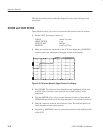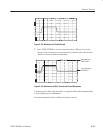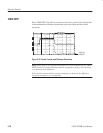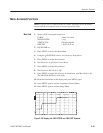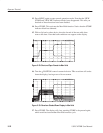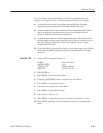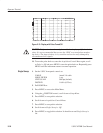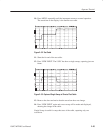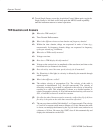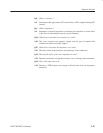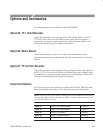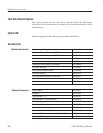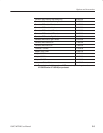
Operator Tutorial
2–26
1502C MTDR User Manual
15. To exit Single Sweep, access the Acquisition Control Menu again, toggle the
Single Sweep is: line back to Off, then push the MENU button repeatedly
until the instrument returns to normal operations.
TDR Questions and Answers
Q1: What does TDR stand for?
A1: Time-Domain Reflectometer.
Q2: What is the difference between time domain and frequency domain?
A2: Within the time domain, things are expressed in units of time (e.g.,
nanoseconds). In frequency domain, things are expressed in frequency,
cycles per second (e.g., kiloHertz).
Q3: What does a TDR actually measure?
A3: Voltage over time.
Q4: How does a TDR display this information?
A4: Voltage on the vertical axis (as amplitude of the waveform) and time on the
horizontal axis (as distance to the event).
Q5: Does electricity travel the same speed (velocity) in all materials?
A5: No. Electricity is like light; its velocity is affected by the material through
which it passes.
Q6: What is that difference called?
A6: The relative velocity of propagation (Vp). The velocity of the cable is
expressed in time/distance (e.g., feet per nanosecond). The velocity of
electricity traveling in a vacuum is compared to the velocity of electricity
traveling in a cable. This relationship is shown as a decimal number. A
relative propagation velocity of .50 would mean the electricity will travel at
50%, or one-half, as fast as it would in a vacuum.
Q7: If a reflection takes 30 nanoseconds to return in a cable with a Vp of .66, how
far away is the point on the cable that caused the reflection?
A7: The one-way time would be 30 divided by 2, or 15 nanoseconds. The velocity
of 1 ns/ft in a vacuum would mean a distance of 15 feet. Because the cable
is slower, we multiply the distance by the Vp (.66 in this case) and arrive at
a distance of 10 feet. Of course, the 1502C does all this automatically and
displays the information on the LCD.



